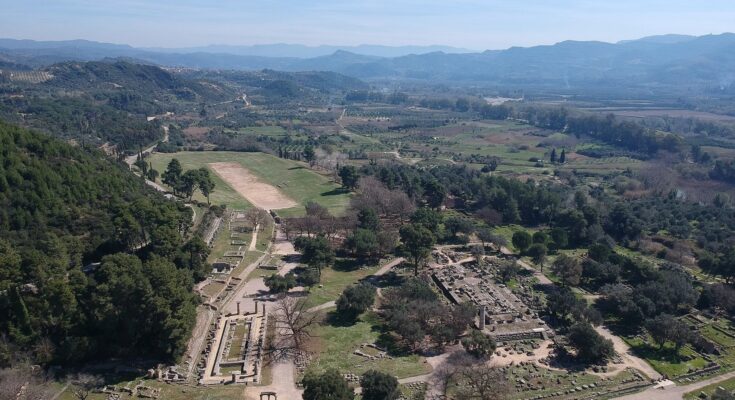There are numerous records about the early development of the ancient Olympic Games. However, most of these were written many hundreds of years after the start of this sporting festival. What does archaeology reveal about how the Olympic Games were established in ancient Greece, and how does this evidence tie in with official written versions?
The archaeology of the founding of the Olympic Games
According to ancient Greek records, this major sporting festival was established in the year 776 BC. Heracles was the supposed founder, according to the earliest tradition. Does archaeology support the idea that the Olympic Games were founded in this year?
We can confidently say that archaeology more or less supports this date. There is certainly no evidence of this festival in the Bronze Age, while there is clear evidence that it had already begun by Homer’s time in the seventh century BC.
However, the exact decade in which the Olympic Games began is not completely clear, although at the site known as the Altis, the sacred precinct around which the games were centered, bronze tripods were unearthed. Many archaeologists interpret these as trophies which may have been used in the Olympic Games.
If so, this would be significant since these tripods date to the ninth century BC. Therefore, this would mean that the Olympic Games must have begun at least as early as that date.
The earliest convincing evidence
However, this speculation is not totally sound. Notably, the number of bronze tripods and other items which appear to be of symbolic significance increases dramatically in the eighth century BC. This points to a festival that was established in that century at the earliest.
There is also evidence that temporary wells started to be dug at Olympia in the eighth century BC. This is consistent with the periodic arrival of many visitors, as would have occurred at the Olympic Games.
At around this same era, we see the first traces of a running track on the Hill of Cronus on the outer edge of the sacred precinct at Olympia known as the Altis. This evidence is particularly interesting for two reasons.
Firstly, the date for this running track as indicated by archaeology corresponds quite closely to the traditional date of 776 BC for the start of the Olympic Games. Archaeologists date it to the Archaic Era, probably around 700 BC, within a century of the traditional date.
Although this is not a perfect correspondence, it is quite close in the grand scheme of things. Further research may well reveal evidence that puts the running track more precisely in line with the evidence from the bronze tripods and temporary wells.
The evolution of the Olympic Games according to archaeology
The second reason why the early evidence is so interesting is because it corresponds to what ancient writers claimed was the first sporting event. Pausanias, for example, claimed that the earliest games were just a running race. This race was the stadion, which was a running race covering a distance of 190 meters.
Therefore, the fact that the earliest archaeological evidence regarding the Olympic Games is a running track supports the accuracy of the traditions recorded by the Greeks hundreds of years after the fact.
Early in the fifth century BC, the running track was moved. It was still on the Hill of Cronus but further down on the lower terraces. The original running track did not provide any specific seating for spectators. However, this new running track did come with seating in the form of embankments.
Near the end of the fifth century BC after less than 100 years of use the running track was replaced with a third one. The new running track was entirely outside of the Altis, the sacred precinct. It was quite large and had embankments which could hold some 40,000 spectators. Its remains are still there to this day.
In summary, the archaeology of the early Olympic Games reveals they did begin approximately when Greek tradition later claimed and that the earliest event does appear to have been a foot race.



